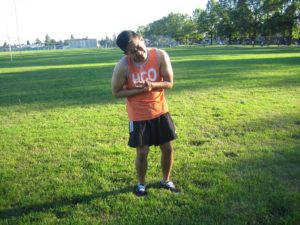A triquetral fracture can occur if the wrist was subjected to trauma. Among the small carpal bones in the wrist, the triquetrum is commonly damaged.
Most cases of wrist fractures including a triquetral fracture occur if attempting to break a fall by extending the arm. If the hand or wrist strikes the ground, the force from the fall can damage one or several bones.
Any form of traumatic injury from a vehicular accident or strong impact can result to a triquetral fracture. Additionally, sports that involve falls or high-impact contact increases the risk.
What are the signs?
The chief signs of a triquetral fracture include wrist pain and tenderness. There is also discomfort when forming a wrist, gripping objects or bending the wrist.

Other symptoms that might be present with the injury include:
- Bruising
- Swelling
- Unusual angle of the finger or hand
A triquetral fracture can oftentimes result to the dislocation of another wrist bone. In case the bone crushes a nerve, it can cause numbness or tingling in the fingers.
Management of a triquetral fracture
For a mild case of triquetral fracture, surgery is not usually required. The doctor will perform reduction which involves gentle manipulation of the bones into their right position without an incision. Even though this is a less invasive approach than surgery, it can be quite painful. A local anesthesia might be given by the doctor prior the procedure.
For a severe triquetral fracture, surgery is required to:
- Get rid of any loose bone fragments
- Fix any severely damaged bones, usually with screws or pins
- Repair any damaged nerves and ligaments
Whether reduction or surgery is performed, the affected wrist is immobilized for at least a few weeks until the bones and ligaments heal.
What is the outlook?
A triquetral fracture is a common type of wrist injury. Depending on the seriousness of the injury, it might require a month up to a year to recuperate. Even though most can fully recover, some experience lingering rigidity in the hand or wrist.
Disclaimer / More Information
The information posted on this page on triquetral fracture is for learning and educational purposes only. To learn how the injury is treated, register for first aid training at one of our training centers located throughout Canada. The training centers are in Edmonton, Calgary, Vancouver, Kelowna, Saskatoon, Victoria, Surrey, Mississauga, Winnipeg, Red Deer, Toronto, Ottawa and Halifax.
